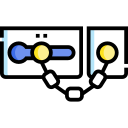Digital Craft Workshops: Make, Learn, Share
Chosen theme: Digital Craft Workshops. Step into a welcoming studio where code meets craft, lasers meet sketchbooks, and ideas turn tangible. Subscribe to join challenges, discover resources, and meet makers shaping delightful, practical projects.
Choosing Your First Workshop
Pick a Digital Craft Workshops topic that solves a real need: a personalized gift, a home fix, or a wearable prototype. Practical motivation keeps learning joyful, focused, and easier to sustain.
Essential Tools and Software
Most Digital Craft Workshops start with approachable tools: Inkscape or Illustrator for vectors, Fusion 360 or Tinkercad for models, and a reliable slicer. Share your setup, and we’ll recommend beginner-friendly alternatives.
Setting Up a Creative Workspace
Clear a table, add good light, keep materials labeled, and place safety gear within reach. Tiny rituals—like a five-minute tidy—make Digital Craft Workshops smoother. Post a photo of your workspace for feedback.
Story: The Sketch That Became a 3D‑Printed Heirloom

A Grandparent’s Doodle, Reimagined
A student scanned a faded notebook doodle—a looping vine—and traced it during a Digital Craft Workshops session. The lines became a pendant, carrying family history quietly into everyday wear.

From Vector to Volume
They extruded the traced vector in Fusion 360, refined thickness for durability, and tested prints in PLA before casting in resin. Each iteration taught balance between elegance, strength, and comfort.

Why Stories Matter in Making
Objects with stories invite care. Digital Craft Workshops encourage narrative prompts so projects feel personal, not generic. Share your origin idea—sketch, photo, or phrase—and invite the community to help shape it.


Skills You Build in Digital Craft Workshops
Learn clean paths, layers, and kerf-aware outlines for laser cutting. Digital Craft Workshops demystify strokes versus fills, corner joins, and export settings so your designs cut crisply without surprise burn marks.
Skills You Build in Digital Craft Workshops
Define dimensions once and let the model adapt. Digital Craft Workshops show constraints, sketch relations, and variables that make lids fit, joints click, and enclosures resize—perfect for evolving ideas and quick iterations.
Community, Feedback, and Belonging
Three simple prompts guide critiques: what works, what confuses, and what to try next. Digital Craft Workshops keep feedback specific and encouraging, so you leave ready to improve—not overwhelmed or discouraged.
From Screen to Material: The Prototyping Pipeline
Export small test slices, not full models. Digital Craft Workshops normalize tiny experiments that confirm tolerances, textures, and joints before committing hours. Comment with your best time-saving test habits.

Make It Yours: Personalizing Your Workshop Journey
Set Intentions and Constraints
Pick a theme—travel, gratitude, or accessibility—and a constraint like one-hour builds. Digital Craft Workshops thrive on focused boundaries that unlock surprising creativity without decision fatigue.
Micro‑Challenges That Build Momentum
Try five‑day sprints: design a connector, a jig, a wearable, a repair, and a gift. Digital Craft Workshops challenges keep scope tiny yet meaningful, teaching transferable techniques through playful repetition.
Track Progress and Celebrate
Keep a simple log: date, goal, lesson, next step. Digital Craft Workshops celebrate incremental mastery. Post your wins—however small—and cheer others. Consistency beats intensity when nurturing creative confidence.

